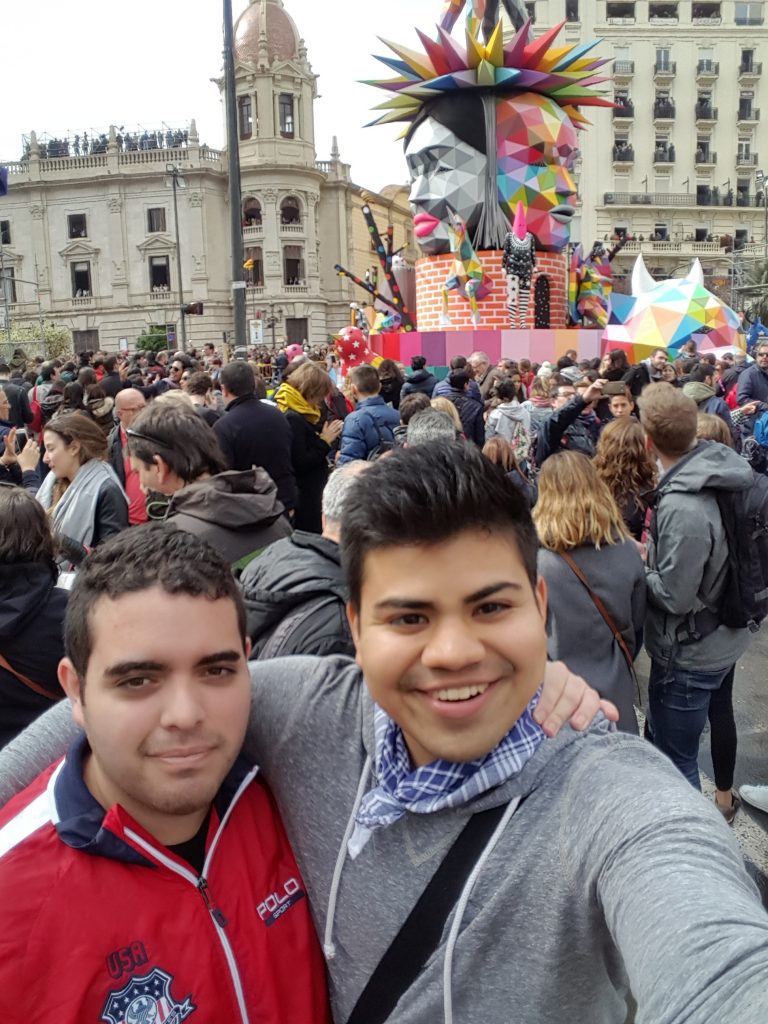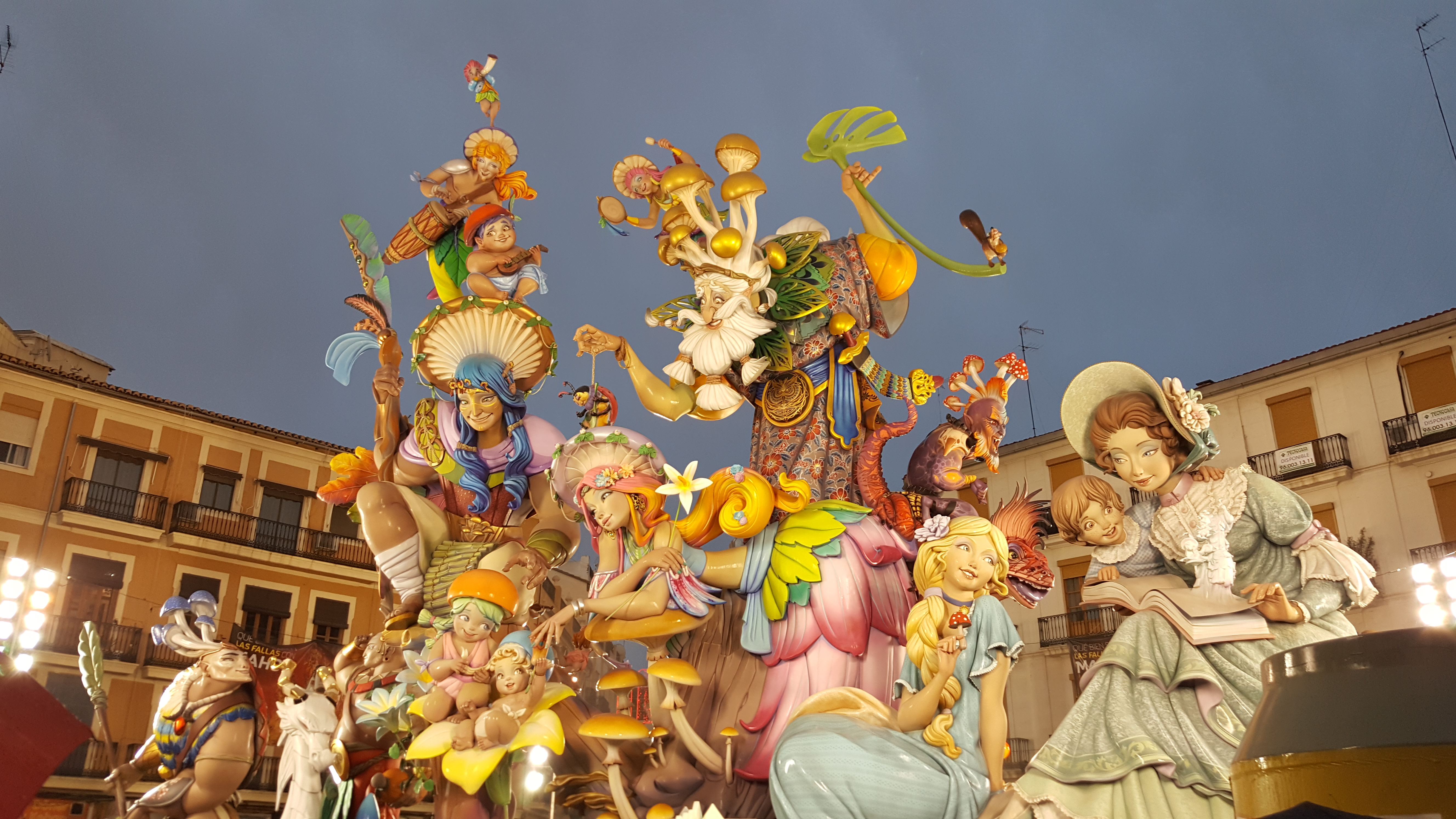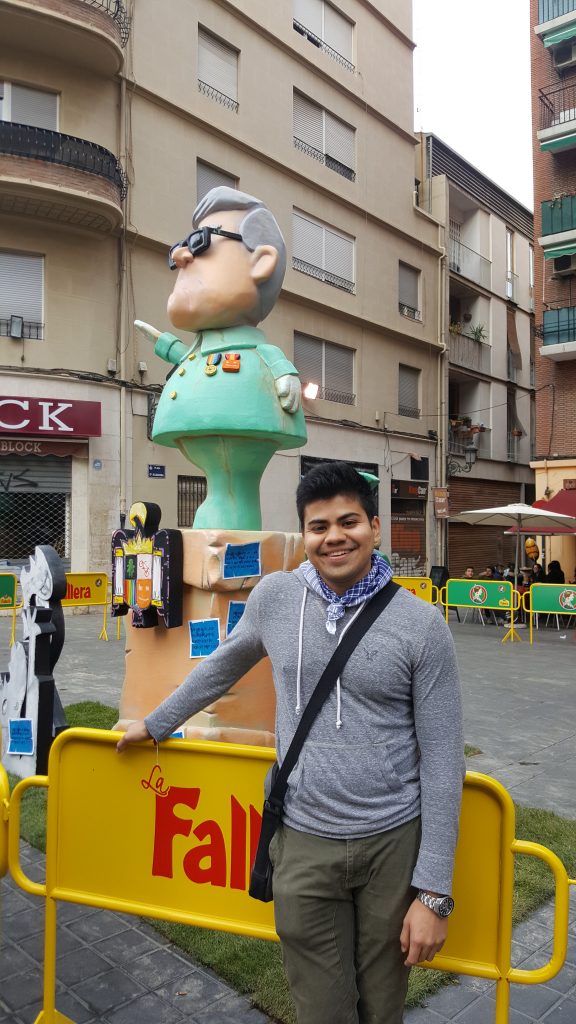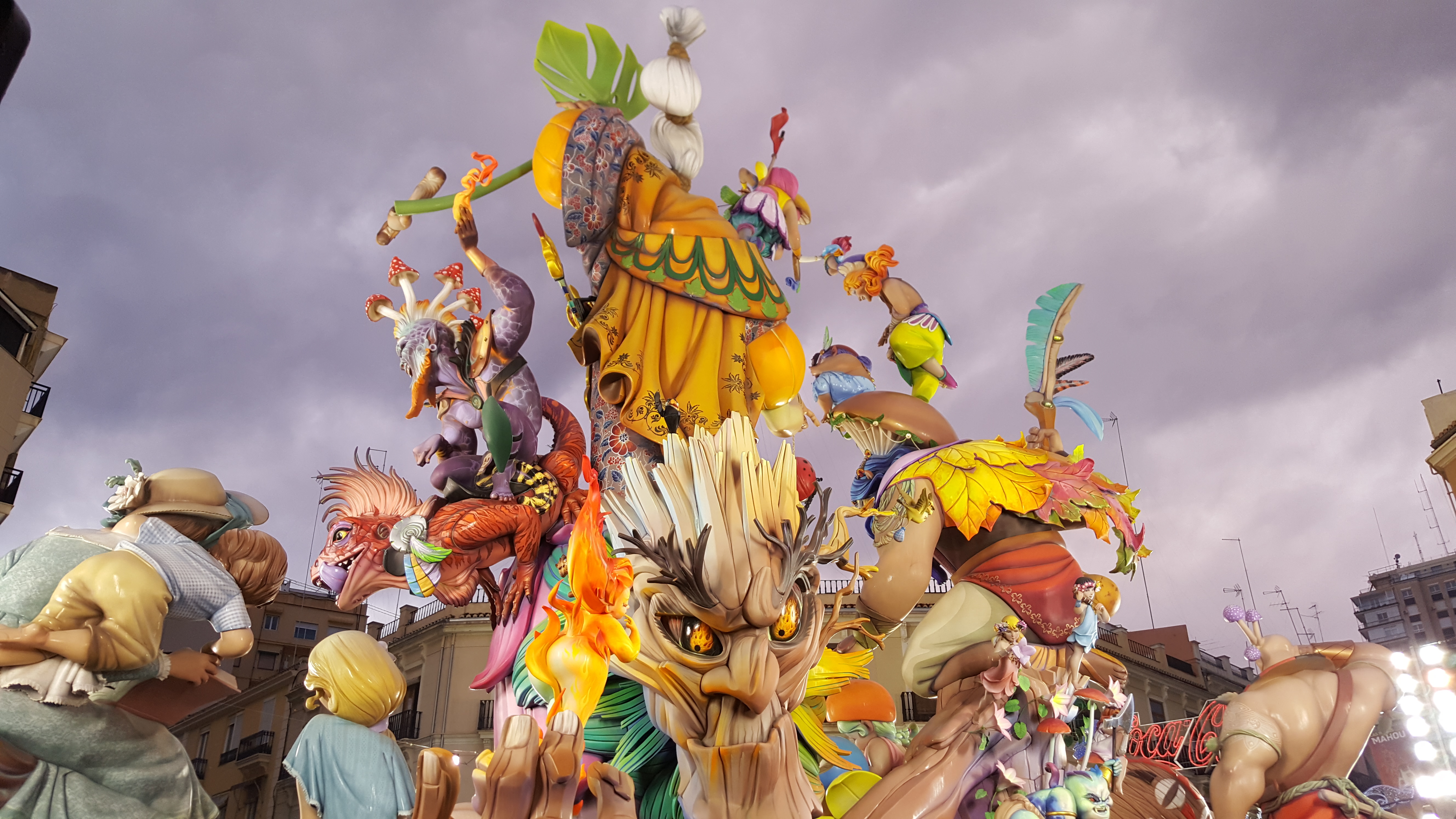Castellano:
Antes de llegar a España, como todos aquellos que estudian en el extranjero, investigué sobre cosas que se pueden hacer en estas nuevas fronteras. Así encontré muchísimos eventos y fiestas que me llamaron la atención. Pero luego vi una fiesta que caía a mediados de marzo en la ciudad costera de Vàlencia. Una fiesta sobre la cual habíamos hablado en mi clase de español en la prepa. Recuerdo cuando mi profesora en aquel entonces, la señorita Browne, nos contó sobre una fiesta donde el pueblo se reunía para hacer grandísimas estructuras de madera en todas partes de la ciudad para luego quemarlas al final de la fiesta. Cuando nos explicó el concepto yo supuse que las estructuras iban a ser algo hecho muy de prisa y sin mucha atención, como a final de cuentas se iban a quemar. Pero luego nos mostró unas fotos y quedé verdaderamente asombrado de las maravillosas estructuras que podían hacer los valencianos. Eran verdaderas obras de arte que estaban destinadas a ser quemadas. Esto era algo que tenía que ver con mis propios ojos.

Las Fallas: Lo primero que vi al llegar a Vàlencia fueron las Fallas, estructuras de cartón y madera hechas por vecindarios enteros de valencianos. Algunos se tardan alrededor de todo un año para hacer semejante estructura.
Mascletà: Es la exposición de “petardos,” como le dicen aquí, que hacen en la plaza histórica de Vàlencia. Petardos, para todos mis mexicanos, son cohetes, pero cohetes de ruido como las palomas mexicanas. La mascletà ocurre durante cada día de la fallas a las dos de la tarde.
L’Ofrena de flors: Significa la ofrenda de flores en valenciano. Esta sucede del 17 al 18 de marzo, cuando cada casal faller le lleva flores para decorar una reproducción de la Virgen María. Por cierto una casal faller es el grupo de falleros que hacen una falla. Por lo regular cada casal faller esta compuesta de vecinos y gente que vive en la misma vecindad.
La Cremà: Significa la finalización de la fiesta. Ocurre en la madrugada del 19 de marzo. A las diez de la noche del 18 de marzo se empiezan a quemar las fallas infantiles que se ubican a escasos metros de las principales. Después, empezando alrededor de la media noche se empiezan a quemar a diferentes horas las fallas principales. Culminando con la quema de la falla municipal en la plaza histórica. Por cierto el nombre falla proviene de la palabra castellana de antorcha, por eso el nombre de las estructuras.
La Nit del Foc: Si la cremà es la finalización de la fiesta, la nit del foc es la celebración de ella. Es una serie de cohetes que se truenan y explotan en el cielo que se traduce al castellano en la noche de fuego. Es el último acto de la fiesta y marca el comienzo de otro año entero antes de la próxima fiesta.
Me encantó poder ir a una fiesta tan extraordinaria aquí en España. Cuando aprendí sobre las Fallas en mi segundo año de prepa yo jamás pensé que iba a poder ver con mis propios ojos esas grandísimas estructuras. Gracias a Dios y a mis padres he podido ver las estructuras erguidas y como se quemaron hasta el piso. Ese par de días en Vàlencia jamás se me olvidaran.
English:
Before arriving in Spain like all those who study abroad I did a little research on the things that I could do within these new borders. While doing my research I found many events and parties that caught my attention. I then saw a party that fell on mid-March in the coastal city of Válencia. A party that we had discussed in my Spanish class in high school. I remember when my teacher at that time, Mrs.Browne told us about a party where the town got together to make huge wooden structures all over the city, only to burn them at the end of the party. When she explained the concept, I assumed that the structures were going to be something done very hastily and very rough, as in the end they would be burned. Then she showed us some pictures and I was truly amazed with the wonderful structures that the Valencians could make. They were true works of art that were designed to be burned. That was something I had to see with my own eyes.

Las Fallas: The first thing I saw upon arriving at Vàlencia were the Fallas, cardboard and wooden structures made by entire Valencian neighborhoods. Some groups take around a whole year to make such a structure.
Mascletà: It is the exhibition of firecrackers as they say here, which they do in the historical square of Vàlencia. The mascletà occurs during each day of the fallas at two o’clock in the afternoon.
L’Ofrena de flors: It means the offering of flowers in Valencian. This takes place from March 17 to 18, when each house faller brings flowers to decorate a reproduction of the Virgin Mary. By the way, a faller house is the group of falleros that make a falla. Usually, each house makes a falla, composed of neighbors and people who live in the same neighborhood.
La Cremà: Signifies the end of the party. It happens in the early hours of March 19th. At ten o’clock on the night of March 18th, the children’s fallas that are located a few meters from the main ones begin to burn. Starting around midnight, the main fallas begin to burn at different times. Culminating with the burning of the municipal falla in the historic plaza. By the way the name falla comes from the Castilian word torch, giving the structures their names.
La Nit del Foc: If the cremà is the end of the party, the Nit del Foc is the celebration of it. It is a series of fireworks that thunder and explode in the sky, this translates into the night of fire in Castilian. It is the last act of the party and marks the beginning of another whole year before the next party.
I loved being able to go to such an extraordinary party here in Spain. When I learned about the Fallas in my second year of high school, I never thought I would be able to see these huge structures with my own eyes. Thanks to God and my parents I have been able to see the structures erected and later burned to the ground. Those were a couple of days in Vàlencia I will never forget.







